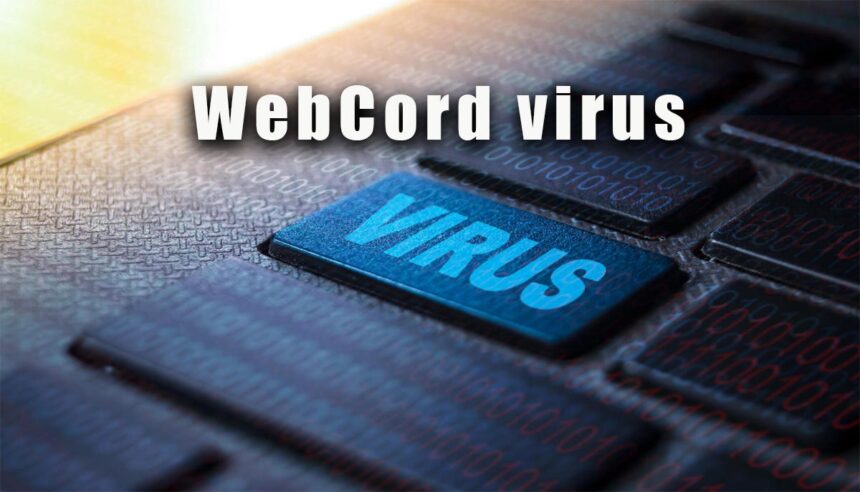Introduction
The term WebCord Virus has recently gained attention in cybersecurity discussions. While WebCord itself is an open-source Discord client designed to offer privacy-focused alternatives to the official app there have been concerns regarding its potential to harbor malicious elements. This article explores the WebCord Virus its origins effects methods of removal and ways to prevent infection.
What is the WebCord Virus?
The WebCord Virus is not an officially recognized malware but is rather a term used by some users who have experienced suspicious activity after downloading WebCord from unofficial sources. In most cases, malware disguises itself as legitimate software, and unsuspecting users may install a trojanized version of WebCord, leading to security risks.
Is WebCord Itself Malicious?
No, WebCord itself is not a virus. It is an open-source application designed to provide a secure alternative to Discord’s Electron client. However, hackers can modify open-source projects and distribute compromised versions containing malicious code. This makes it crucial to download WebCord only from trusted sources like its official GitHub repository.
How Does the WebCord Virus Infect Systems?
Cybercriminals use various techniques to spread infected versions of WebCord. Some common methods include:
1. Fake Downloads from Unofficial Websites
Attackers create phishing websites that mimic legitimate software pages. Users who download WebCord from these sites may end up installing malware instead.
2. Bundled Malware in Cracked Software
Hackers often bundle malicious code with pirated software downloads. Users looking for free alternatives to premium software might unknowingly install a trojanized version of WebCord.
3. Discord Phishing Links
Malicious actors may share phishing links in Discord servers, claiming to offer a “better” version of WebCord. Clicking these links can lead to malware installation.
4. Exploits in Older Versions
Outdated software can have security vulnerabilities. If users fail to update WebCord, hackers may exploit known security flaws to inject malware.
Signs of a WebCord Virus Infection
If your computer is infected with the WebCord Virus, you may notice the following symptoms:
- Unusual CPU and Memory Usage: The malware may run background processes, slowing down your computer.
- Unauthorized Discord Activity: Your Discord account may send messages you didn’t write or join servers without your knowledge.
- Strange Pop-ups and Ads: Some malware versions inject ads or unwanted pop-ups into your system.
- Changes in System Settings: The virus may alter registry settings or disable antivirus software.
- Credential Theft and Data Leaks: If the malware contains a keylogger, it can steal your Discord credentials, passwords, and personal information.
How to Remove the WebCord Virus
If you suspect that your system is infected with a malicious version of WebCord, follow these steps to remove it:
Step 1: Uninstall WebCord
- Open Control Panel (Windows) or Applications (Mac).
- Locate WebCord in the list of installed programs.
- Click Uninstall and follow the prompts.
Step 2: Delete Residual Files
- Navigate to the WebCord installation directory (typically C:\Users\YourName\AppData\Local\WebCord for Windows).
- Delete all associated files and folders.
Step 3: Scan for Malware
- Download a reputable antivirus or anti-malware tool (such as Malwarebytes, Bitdefender, or Windows Defender).
- Run a full system scan.
- Follow the recommended steps to remove detected threats.
Step 4: Reset Browser and Discord Passwords
If your Discord account was compromised:
- Change your Discord password
- Enable two-factor authentication (2FA) for added security.
- Clear browser caches and stored passwords.
Step 5: Update System and Security Software
- Ensure your operating system is up to date.
- Enable firewall and real-time protection in your security software.
- Avoid using outdated applications.
How to Prevent WebCord Virus Infection
Prevention is the best defense against malware. Here are essential tips to keep your system secure:
1. Download WebCord Only from Official Sources
Always download WebCord from its official GitHub repository or other verified sources to avoid installing modified versions.
2. Enable Real-time Antivirus Protection
Use Windows Defender, Avast, Norton, or another trusted antivirus to scan downloads in real time.
3. Avoid Clicking Suspicious Links
Never open links from untrusted Discord messages, emails, or websites. Phishing attacks are a common method of malware distribution.
4. Keep Your Software Updated
Always update WebCord and other software to patch security vulnerabilities.
5. Use a Firewall
A firewall can block unauthorized access to your system and prevent malicious software from sending data to remote servers.
Is WebCord Safe to Use?
Yes, WebCord is safe when downloaded from its official source. The open-source nature of WebCord means that its code is publicly available allowing the community to review it for security flaws. However users should remain cautious about downloading unofficial versions that may contain malware.
Conclusion
The WebCord Virus is not an actual virus but a term associated with malware-laced versions of WebCord distributed through unofficial sources. The legitimate WebCord application remains a secure and privacy-friendly alternative to Discord’s official client. However cybercriminals exploit users’ trust by distributing infected copies leading to security breaches.
To stay protected, users should only download WebCord from verified sources keep their software updated enable real-time antivirus protection and avoid clicking on suspicious links. If infected following the outlined removal steps can help eliminate malware and restore system security.




